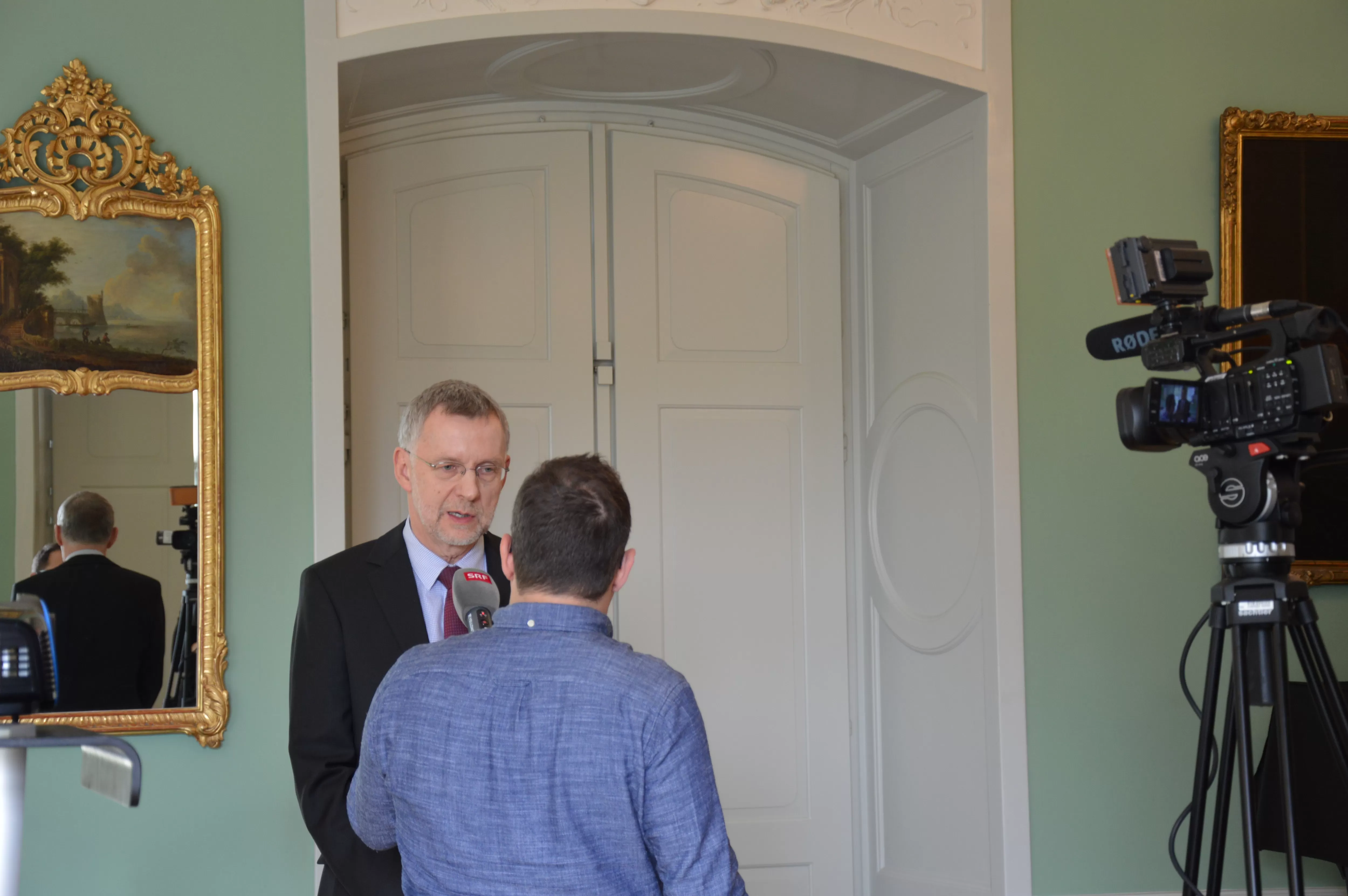
Everything revolves around long-term safety
On Thursday 6th April, Markus Fritschi, a member of Nagra’s Executive Board, opened the media conference in Villa Boveri (Baden) with a brief overview of the current status and future milestones of the Sectoral Plan process. He then handed over to Marian Hertrich, Geophysics Project Manager, who was responsible for leading the most extensive 3D seismics campaign ever carried out in Switzerland. Work was completed at the beginning of February 2017 and now the challenging processes of evaluating and interpreting the data can start. Hertrich introduced the participants to the world of data processing, explaining how it is divided into several different modules; these are performed in several countries, which allows the specialist knowledge of individual companies to be applied for each module.
In autumn 2016, Nagra submitted eight permit applications for exploratory boreholes for each of the siting regions Jura Ost and Zürich Nordost. The applications for Nördlich Lägern will follow this summer. Current planning foresees that work on the boreholes will start from 2019. Herwig Müller, Head of the Field Work Section at Nagra, explained that geophysical and hydraulic data will be collected in the boreholes, as well as rock samples in the form of drillcores. Drillcores provide direct information on underground geological structures. The geophysical data can also be used to check and calibrate surface measurements. Müller explained the link between the measured data from the 3D seismic campaign and from the boreholes, which are used together to develop a detailed geological model. The ultimate goal of the investigations is to allow a transparent and reliable assessment of the long-term safety of a deep geological repository.
The seventh international Clay Conference will be held in the Davos Congress Centre from 24th to 27th September 2017. Around 400 scientists and engineers from twelve different countries are expected to attend; their common interest is investigating the use of clays as natural and engineered barriers in deep geological repositories. Nagra is organising the Conference in the mountains of Graubünden. Olivier Leupin, Deputy Head of Research & Development at Nagra, explained the importance of the Clay Conference as a platform for exchange of information between research coordinators from international partner organisations. International exchange and collaboration are very important and the Clay Conference is a good example of how such collaboration functions. Besides Switzerland, clay is also being considered as a host rock option in Belgium, Germany, France and Canada. Many more countries are planning to use clays as engineered barriers in the disposal rooms or sealing zones of repositories. The Conference programme will include around 100 presentations and 200 posters; seminars and workshops dedicated to specific topics will also be held.